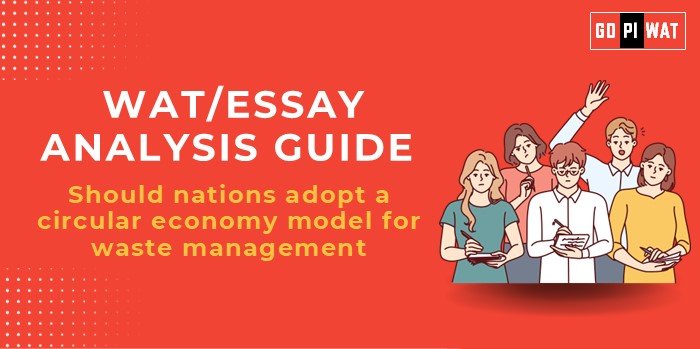📝 Written Ability Test (WAT) / Essay Analysis Guide
Understanding the Topic’s Importance
The essay underscores the urgency of addressing global waste challenges. The circular economy aligns with SDG 12 (Responsible Consumption) and offers pathways to decouple growth from resource exploitation.
⏱️ Effective Planning and Writing
- Time Allocation:
- Planning: 5 minutes.
- Writing: 20 minutes.
- Review: 5 minutes.
📖 Introduction Techniques for Essays
- Contrast Approach: “While linear economies have driven growth, they’ve also created 2 billion tons of waste annually. A circular model could reshape this trajectory.”
- Solution-Oriented: “By 2050, waste generation is expected to increase by 70%. Circular economies present a sustainable solution to this looming crisis.”
📚 Structuring the Essay Body
- Achievements: Cite global successes, such as EU recycling rates and Japan’s resource efficiency.
- Challenges: Discuss infrastructural gaps, costs, and resistance.
- Future Outlook: Highlight innovations in recycling, waste-to-energy, and global cooperation models.
✅ Concluding Effectively
- Balanced Approach: “The circular economy offers transformative potential, but its success depends on overcoming significant financial and structural barriers.”
- Future-Oriented Approach: “By integrating circular models, nations can ensure sustainability and resilience in a resource-constrained future.”
🌍 Sample Short Essays
- Balanced Perspective: “Circular economies balance environmental priorities with economic opportunities. While challenges exist, global successes prove its viability.”
- Solution-Oriented: “With technological advancements and policy support, nations can transition from wastefulness to sustainability.”
- Global Comparison: “As Sweden and Japan lead in circular economies, other nations must follow to mitigate waste crises.”


